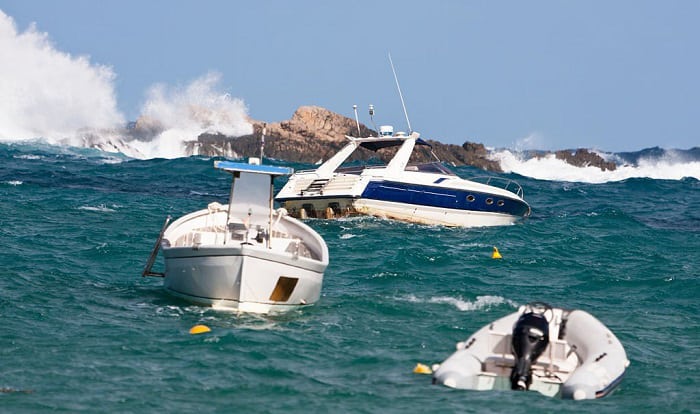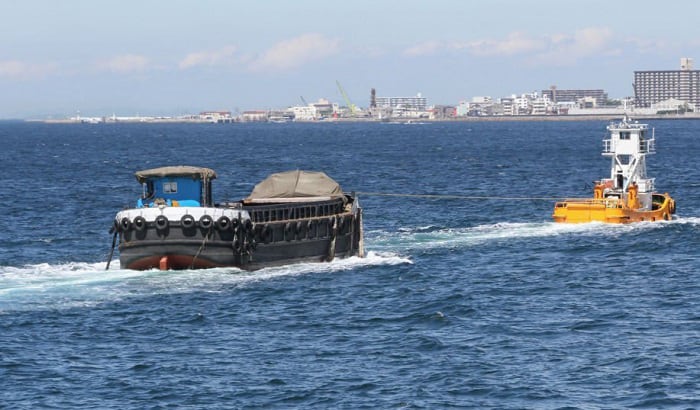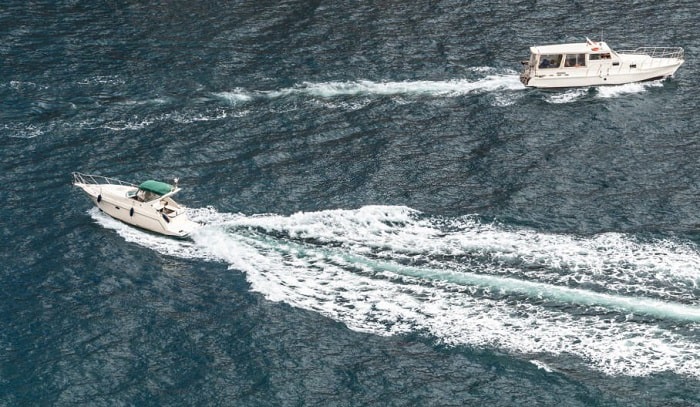Rules exist to maintain order and right of way for cars and boats. One situation in which such rules are necessary is when one boat is overtaking another. Which boat must give way?
It is the overtaking boat that must make adjustments while the boat being overtaken should stay its speed and course. Let’s take a look at the right of way rules between boats to better understand this regulation.
Read on.
Table of Contents
Boating Right of Way
To understand how right of way works for a boat, we must first become familiar with two terms: give-way and stand-on. When two boats are to cross one another, each is designated one of these two roles which dictate what each must do. It is the stand-on vessel that has right of way in every situation.
Give-way refers to the boat that needs to make adjustments in a given situation while the stand-on vessel is the boat that must maintain its course and speed. Potential collisions can be avoided by determining which vessel must give way and which should stand on.
While this sounds like a reasonable system, each situation ends up having different factors that need to be considered. One of the simplest ways to determine each boat’s role is to refer to a list that details the order of priority for vessels based on their type and capability.
Priority List for Vessels
- Overtaken vessel
- Watercraft not under command
- Any vessel restricted in mobility
- Watercraft limited by draft
- Fishing vessels
- Sail-driven crafts
- Power-driven vessels
Vessels at the top are given a higher priority as the stand-on vessel over vessels at the bottom. Many boating situations can be covered by referring to this list; however, there are still some that may be difficult to assess.
When a motorboat is crossing paths with a PWC, it will be difficult to assess because both are power-driven. We can further analyze this by going over maneuvering situation types and proceeding according to which one we find ourselves in.
Maneuvering Situations
There are three main situations based on the existing risk of collisions; these are crossing, meeting, and overtaking. Combining these with the priority list above allows us to understand the situation better and formulate an action plan. A simple plan is always better because it is easier to remember, especially during emergencies.
Let’s take a look at these three types below.
1. Crossing
Crossing refers to when two vessels meet, with one coming in from the side of the other and at an angle. In such a situation, the boat whose bow is on course to collide with the side of the other boat is the give-way vessel. It is this craft’s responsibility to alter speed and course to allow safe passage to the other.
One special instance would be when two powerboats are about to cross paths at a right angle, which makes it difficult to judge which should give way to the other. In such a situation, the one on the starboard side is the stand-on vessel. But it is best to prepare for evasive maneuvers until the crossing is completed.
2. Meeting
This situation involves two boats meeting head-on where neither vessel has a clear right of way. Both should give way to the other by adjusting course to the starboard side with the other boat being at the port side.
When a motor boat and a PWC are meeting head on, both vessels need to make adjustments. It is important to take a reactive approach and stay vigilant throughout the entire passage.
3. Overtaking
An overtaking situation may be the easiest one to judge based on our priority list above because it disregards any other condition. The only thing to remember is that it is the giveway vessels responsibility to adjust its speed and course while the other vessel is to maintain its course until the passage is completed.
Frequently Asked Questions
What should a sailboat do to avoid colliding with a stand-on vessel?
Sailboats are usually stand-on vessels except in a few circumstances. As give-way vessels, sail-driven crafts need to be extra vigilant to make up for the lack of mechanical propulsion. Remember to make adjustments as early as possible.
Do the same rules apply when a small craft like a PWC is overtaking another vessel?
Even for smaller recreational vessels and watercraft, the guidelines stated above still stand.
In a crossing, what should the boat on the starboard (right) do if a collision seems likely?
In this case, the boat should change course or speed to try to avoid the collision. This is done by the stand-on vessel if it is what is necessary to keep the boat safe. A sailboat and a PWC may need to react sooner or in a different way, so it’s best to always stay vigilant in meetings between vessels.
Conclusion
One boat is overtaking another. Which boat must give way? Now you know that it’s always the overtaking vessel that needs to adjust its course and speed to keep a collision from happening.
More importantly, you have a better idea of the boating right of way, which is necessary to know how to deal with different boat meetings. But is it the most effective way? Let us know what you think in the comments section below.
Remember to boat safely.

“My intention from the first day establishing Boating Basics Online is to provide as much help as possible for boaters who want to experience a first safe and convenient trip. So feel free to join us and share your beautiful journeys to the sea!”



